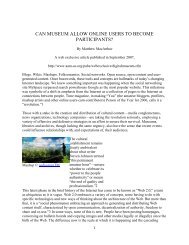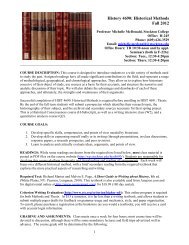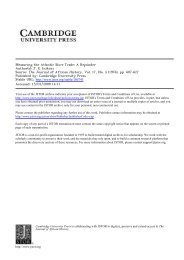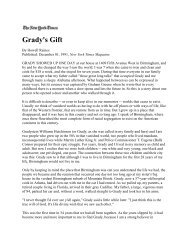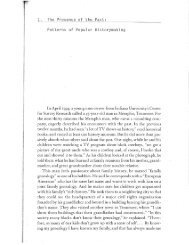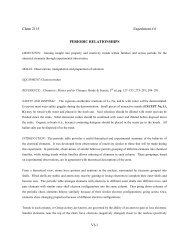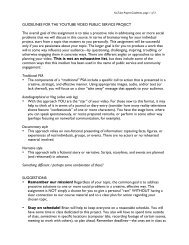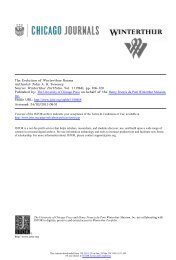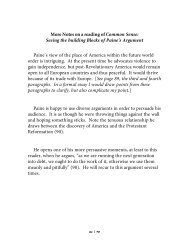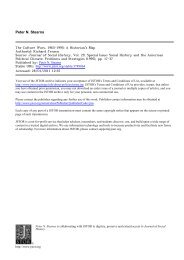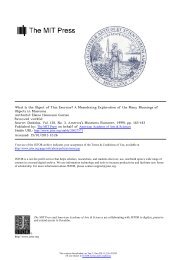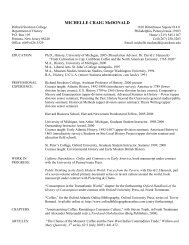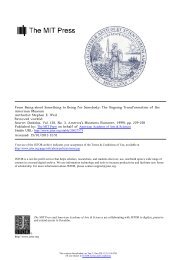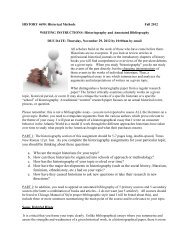V-1 Chem 2115 Experiment # 5 Limiting Reactants
V-1 Chem 2115 Experiment # 5 Limiting Reactants
V-1 Chem 2115 Experiment # 5 Limiting Reactants
You also want an ePaper? Increase the reach of your titles
YUMPU automatically turns print PDFs into web optimized ePapers that Google loves.
EXPERIMENTAL PROCEDURES<br />
1. Reaction: Obtain approximately 50 mL of distilled water in a 125 mL Erlenmeyer flask. Adjust the pH of the<br />
water by adding 3 M NH3 dropwise until the litmus or pH paper shows that the solution is just basic. To test, obtain<br />
a piece of either red/neutral litmus or pH paper. Using a stirring rod, touch a drop of the distilled water to the paper.<br />
If the paper turns blue, the solution is already basic. If the paper stays red, add 1-3 drops of the 3 M NH3, stir and<br />
check the color of the paper. Continue this until the solutions turns the paper blue.<br />
Your instructor will assign you a mass of potassium oxalate. Weigh out the assigned mass of potassium oxalate to<br />
within + 0.005 g of your assigned mass. Dissolve the potassium oxalate in the 50 ml of the pH adjusted distilled<br />
water. Use a small quantity of distilled water to rinse the weighing boat into the beaker in order to transfer ALL of<br />
the potassium oxalate. Next, while stirring, use a volumetric pipette to carefully add 15 mL of the 0.0750 M<br />
calcium chloride solution to your flask to form the calcium oxalate precipitate. Note your observations.<br />
Using a hot plate, gently heat the solution to 75°C for 15 minutes. Do not let the temperature go over 75°C. When<br />
removing your thermometer from the flask, be sure to wash it carefully with distilled water into the flask in order to<br />
limit the amount of precipitate lost. After 15 minutes, remove the solution from the heat and allow the precipitate to<br />
settle. You can immerse the beaker in an ice bath to help cool the mixture. While the precipitate is settling, warm<br />
approximately 30 mL of distilled water to 70–80°C. This warm water will be used later to wash the filtered<br />
precipitate.<br />
2. Filtering: Prepare to filter the calcium oxalate precipitate by locating your fritted (Gooch) crucible and obtaining<br />
a crucible holder, filter paper/pad and filtering flask. Place the filter in the crucible and record the mass. Set-up the<br />
filtration apparatus as demonstrated by your laboratory instructor. Apply suction, and slowly pour approximately<br />
10 mL of distilled water through the crucible. Use a stirring rod to help seat the filter in the crucible. Be sure that<br />
the filter covers all of the holes and that it is properly seated onto the crucible so that no solid can pass around the<br />
outside edges of the filter.<br />
While the suction remains on, carefully filter the precipitate by pouring it slowly from the Erlenmeyer flask into the<br />
crucible. Use small portions of distilled water to wash your Erlenmeyer flask to ensure your have transferred all of<br />
the solid to the crucible. Wash the precipitate in the crucible, by slowly adding three 10 mL portions of the warm<br />
distilled water. Allow the suction to pull through the crucible for at least 5 minutes after the last amount of solution<br />
was filtered.<br />
V-2



